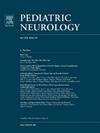New-Onset Refractory Status Epilepticus With Diffuse Cerebral Restricted Diffusion in Young Children: A Novel Clinical-Radiologic Presentation
IF 3.2
3区 医学
Q2 CLINICAL NEUROLOGY
引用次数: 0
Abstract
Background
New-onset refractory status epilepticus (NORSE) is a clinical presentation characterized by explosive-onset refractory status epilepticus (RSE) without evident etiology or active epilepsy, often leading to devastating epilepsy. There is heterogeneity in neuroradiographic findings for NORSE. We encountered a series of young patients with NORSE who had diffuse cerebral restriction in diffusion (DCRD) with similar radiographic appearances as acute encephalopathy with biphasic seizures and late restricted diffusion/acute leukoencephalopathy with restricted diffusion (AESD/ALERD). We explore clinical similarities and proposed pathophysiologic overlaps to highlight a novel clinical-radiologic presentation.
Methods
Retrospective review was completed for patients younger than five years meeting NORSE criteria and then screened for radiographic evidence of DCRD. Demographic, clinical, and outcome data were collected.
Results
Eleven patients met NORSE criteria, of whom seven displayed DCRD. Immunosuppressant management varied. All patients required multiple antiseizure medications and continuous infusions for RSE. Only one had an etiology identified (genetic). All but one patient developed diffuse, global, and progressive cerebral atrophy. Two patients died: one after prolonged seizure three years post-NORSE and another of unknown causes two months post-NORSE. Of five survivors, three have medically refractory epilepsy. Most survivors have severe disability.
Conclusions
We present a single-center case series of seven patients with NORSE and DCRD, akin to AESD/ALERD. Our patients differed clinically to AESD/ALERD in terms of seizure severity and poorer outcome. There is a need to develop biomarkers for specific NORSE phenotypes. The young child with NORSE and DCRD may represent a novel phenotype with a specific neuroradiographic signature that deserves further attention.
新发难治性癫痫状态伴弥漫性脑弥散受限:一种新的临床放射学表现。
背景:新发难治性状态癫痫(NORSE)是一种临床表现,其特点是爆发性发作的难治性状态癫痫(RSE),无明显病因或活动性癫痫,通常会导致破坏性癫痫。NORSE 的神经放射学检查结果存在异质性。我们遇到了一系列年轻的 NORSE 患者,他们的弥漫性脑弥散受限(DCRD)与急性脑病伴双相癫痫发作和晚期弥散受限/急性白质脑病伴弥散受限(AESD/ALERD)的影像学表现相似。我们探讨了两者的临床相似性和病理生理学重叠,以突出一种新的临床放射学表现:方法:我们对符合 NORSE 标准的五岁以下患者进行了回顾性检查,然后筛选出 DCRD 的放射学证据。结果:11 名患者符合 NORSE 标准:结果:11 名患者符合 NORSE 标准,其中 7 人显示出 DCRD。免疫抑制剂的使用方法各不相同。所有患者都需要服用多种抗癫痫药物并持续输注 RSE。只有一名患者找到了病因(遗传)。除一名患者外,所有患者都出现了弥漫性、全身性和进行性脑萎缩。两名患者死亡:一名是在 NORSE 发生三年后长期癫痫发作后死亡,另一名是在 NORSE 发生两个月后死于不明原因。五名幸存者中,三人患有药物难治性癫痫。大多数幸存者严重残疾:我们介绍了一个由七名 NORSE 和 DCRD(类似于 AESD/ALERD)患者组成的单中心病例系列。我们的患者与 AESD/ALERD 的临床表现不同,他们的癫痫发作严重程度和预后较差。有必要针对特定的 NORSE 表型开发生物标记物。患有 NORSE 和 DCRD 的幼儿可能代表了一种具有特定神经放射学特征的新型表型,值得进一步关注。
本文章由计算机程序翻译,如有差异,请以英文原文为准。
求助全文
约1分钟内获得全文
求助全文
来源期刊

Pediatric neurology
医学-临床神经学
CiteScore
4.80
自引率
2.60%
发文量
176
审稿时长
78 days
期刊介绍:
Pediatric Neurology publishes timely peer-reviewed clinical and research articles covering all aspects of the developing nervous system.
Pediatric Neurology features up-to-the-minute publication of the latest advances in the diagnosis, management, and treatment of pediatric neurologic disorders. The journal''s editor, E. Steve Roach, in conjunction with the team of Associate Editors, heads an internationally recognized editorial board, ensuring the most authoritative and extensive coverage of the field. Among the topics covered are: epilepsy, mitochondrial diseases, congenital malformations, chromosomopathies, peripheral neuropathies, perinatal and childhood stroke, cerebral palsy, as well as other diseases affecting the developing nervous system.
 求助内容:
求助内容: 应助结果提醒方式:
应助结果提醒方式:


